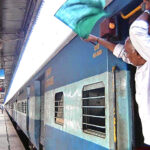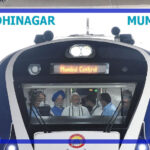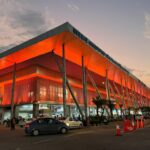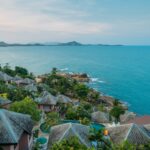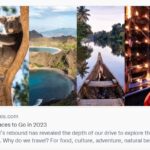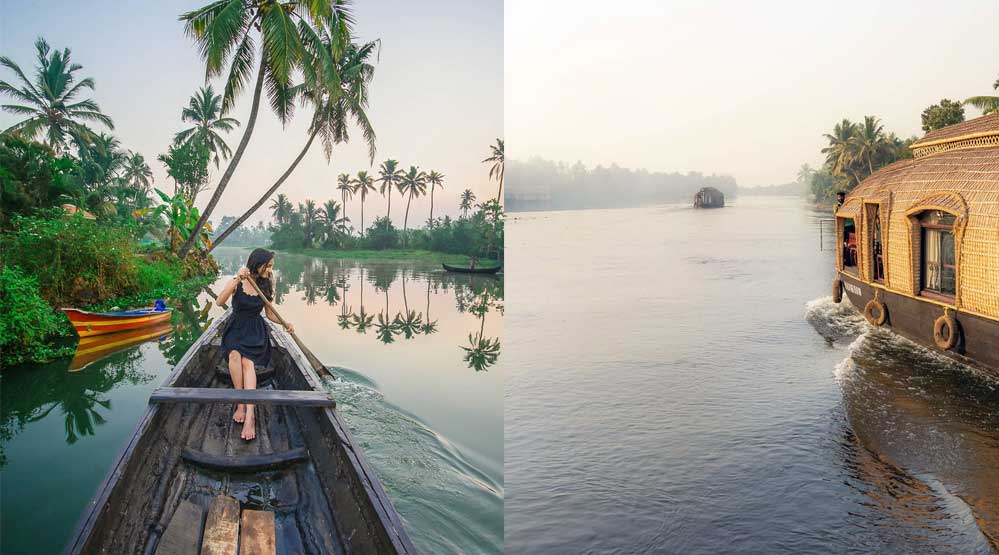
The Great Backwaters is a 900 km long water world spread across Kerala. This fascinating geographical feature was formed by the action of waves and shore currents creating low barrier islands across the mouths of rivers flowing down from the Western Ghats mountain range. The Great Backwaters comprises an intricate network of lakes, canals, estuaries and deltas of forty-four rivers that drain into the Arabian Sea. The important stretch of this unique water world is the 168 km expanse from Kollam to Kottapuram, declared as a National Waterway. A world shaped by 44 rivers, 34 lakes and innumerable canals.
Backwaters are the confluence of lakes, rivers, islands, etc. Its detailed information.
Lakes
Vembanad Lake
The most beautiful and popular part of the backwaters, the Vembanad Lake spans several districts in Kerala. The longest lake in India and the largest in Kerala, the Vembanad Lake is approximately 14 km wide at its broadest point. The total area drained by the lake is 15,770 sq. km, which accounts for 40% of the area of Kerala.
Fed by 10 rivers including the six major rivers of central Kerala namely Achenkovil, Manimala, Meenachil, Muvattupuzha, Pamba and Periyar, it boasts of a rich bio-diversity.
Home to more than 20,000 waterfowls – the third largest such population in India, the Vembanad Wetland System is included in the list of wetlands of international importance, as defined by the Ramsar Convention for the conservation and sustainable utilisation of wetlands in 2002.
Ashtamudi Lake

So called because of its 8 arms or channels, Ashtamudi Lake is the gateway to the backwaters. This 16 km long lake is the second largest in Kerala, with numerous navigable canals and rivers interconnecting almost all the regions of South Kerala. Ashtamudi is home to 57 species of birds, of which 6 are migratory and 51 resident; 45 insect species, 26 species of butterfly and 97 species of fish.
Kayamkulam Lake
Spread across the districts of Kollam and Alappuzha, the Kayamkulam Lake covers an area of 60 sq. km and merges with the sea at the Kayamkulam barrage. The lake used to be connected to the sea most of the time except during the dry season when a bar like formation separated it from the sea.
Rivers
The rivers of Kerala have played a key role in the formation of the backwaters. Of the 44 rivers flowing in the state, 41 flows to the West and the other three flow to the East. The rivers, which originate from the Western Ghats and rush into the Arabian Sea, are all rain-fed. Most of them can be navigated up to the midland region and provides an economic means of transport for boats, ferries etc.

Periyar
The longest river and the one with the largest discharge potential in Kerala, Periyar is one of the few perennial rivers in the region. The Marthandavarma branch of the Periyar flows southwards, before draining into the Vembanad backwaters at Varapuzha.
Pamba
The Pamba originates in the Western Ghats at an altitude of 1650 metres and flows through Ranni, Kozhenchery, Tiruvalla, Chengannur, Kuttanad, Karthikapally, Ambalappuzha taluks and finally empties into the Vembanad Lake.
Kallada River
The Kallada River is one of two major rivers that flow through the Kollam district. It travels for 121 km, flowing through Punalur, Pathanapuram, Kunnathur and Kallada before ending at Ashtamudi Lake.
Islands
Numerous islands – big and small, inhabited and uninhabited – dot the backwaters of Kerala. From Vypeen in Kochi – one of the most densely populated islands in the world, to Pallipuram in Alappuzha noted for its whitish sand, each island is unique in its setting and character.
Pathiramanal
Pathiramanal or Island of Midnight Sand is known as a place where the King of Kochi traditionally made a night halt on his journey to South Kerala. The 19.6 hectares of land supposedly surfaced from the lake after an earthquake, though locals say it was formed when a devout Brahmin Sree Narayan Gurudev, dived in to perform his ritual evening bath and like Moses at the Red Sea, the waters of the Vembanad parted.
Kumarakom
The name ‘Kumarakom’ is said to have derived from the words ‘kuminja’ (heap) and ‘akam’ (inside), referring to a land formed by the accumulation of sediments. The island created by the deposition of mud and other materials through natural and man-made methods, is one of the world’s most favourite tourist spots.

Bolgatty
Bolgatty Island is just a boat ride away from the Kochi harbour mouth. The island is famous for the ancient Bolgatty Palace built by a Dutch trader in the year 1744, which holds the distinction of being the oldest Dutch palace outside Holland.
Activities
there are many attractive alongside backwaters which tourists can enjoy
Join the snake boat race
Snake boat races have always been a part of the tradition of Kerala and most of the races have been held for years. Vallamkali, as it is commonly known, begins during the harvest festival of Onam. The most famous among the boat races is the Nehru Trophy Boat Race.
Rejuvenate with Ayurveda
The ancient regimens of Ayurveda, the 5000-year-old system of holistic healing, are practised to perfection in Kerala. Many of the backwater resorts have certified Ayurveda centres, while some of the houseboats offer treatment procedures on board.

bird watching
The backwaters are alive with a variety of birds. Watch Egrets, Herons and Kingfishers sunning themselves or swooping in to catch a fish. Kumarakom and Kadalundi are favourite haunts of migratory birds like the Siberian Storks, Teals, Darters etc.
Best time to visit
The best season to visit is from December to the end of January, when the weather is cool and dry, but it’s possible to hire a houseboat all year round. Some find the monsoon season appealing for clubbing houseboating and Ayurveda. March to May gets very hot and humid, so if you hire a houseboat during this time, an air-conditioned one is definitely recommended.
Where to stop during backwaters visit?
Kumarakom Bird Sanctuary

It is the first scientifically formed and preserved bird sanctuary in India, with about 180 species of birds. These include more than 90 species of migratory birds. The profuse bird life owes much to the location and the climatic peculiarities of the region. June to August is the best time of the year for bird watching. Migratory birds in huge numbers visit the sanctuary from November to February.
Kuttanad
The rice bowl of Kerala, Kuttanad boasts of paddy fields, which are below sea level and are surrounded by earthen embankments. The crops are grown on the low-lying ground and irrigated with freshwater from canals and waterways connected to the Vembanad Lake. The area is similar to the dikes of the Netherlands where land has been reclaimed from the sea and crops are grown.
The history of paddy cultivation can be traced back to centuries. Its evolution was correlated to the technological advancement of this place. Large farming areas near Vembanad Lake were actually reclaimed from the lake.

Thanneermukkom Salt Water Barrier
The Thanneermukkom Bund (Thanneermukkom Salt Water Barrier) was constructed as a part of the Kuttanad Development Scheme to prevent tidal action and intrusion of salt water into the Kuttanad lowlands across Vembanad Lake between Thanneermukkom in the South and Vechur in the North. It is the largest mud regulator in India. This barrier essentially divides the lake into two parts – one with perennial brackish water and the other with freshwater fed by the rivers draining into the lake.
Alumkadavu
Alumkadavu, located north of Kollam district, is where the first houseboats in India were built. It is today a major centre for the construction of Kettuvalloms, which are later modified into houseboats for travellers.
Alappuzha
Referred to as Venice of the East, Alappuzha with its vast network of lakes, lagoon and freshwater rivers is immensely beautiful. The venue for world-renowned snake boat races, Alappuzha is also famous for its marine products and coir industry.
Kochi
One of the finest natural harbours in the world, Kochi is more popularly known as the Queen of the Arabian Sea. Kochi is a place with deep roots in history and its streets exude an old-world charm; a place with beautiful monuments and a variety of linguistic and ethnic communities like the Jews.
Activities along with backwaters
Discover a world where life is centred around water. Where children learn to swim even before they walk. Where the skiff is the family vehicle and markets and malls come drifting by.

Aquatic life
The Great Backwaters has a rich aquatic life. Vembanad Lake, for instance, is home to about 150 species of fish. The backwaters also has more than 70 edible species, which include shrimp, mullets, pearl spots, crabs, oysters, clam, milkfish, scampi, catfish etc.
Mangroves
A detailed survey along the entire coastal stretch of Kerala revealed 39 species of mangrove flora and associates from 10 backwater ecosystems of Kerala. The Ashtamudi estuary has 43 species of marshy and mangrove varieties including Syzygium travancoricum trees, a critically endangered species on the IUCN Red List.
Birds
The Pathiramanal Island is home to about 90 species of birds and 30 species of butterflies. The backwaters between the island and the Kumarakom Bird Sanctuary is a favourite haunt of migratory birds from Siberia and Europe.
Coir-making
Coir-making is one of the primary occupations of the people living in the backwaters. Entire villages engaging in coir-making can be seen along the waterside.
Boat buildings
Kerala is home to some of the finest boat builders in the world. Snake boats, which are 100 ft. long and seats over 90 oarsmen are built without using even a single nail.
Houseboats
The houseboats (kettuvalloms) have been a part of the backwaters from time immemorial. Once a popular mode for transporting goods, they are today the best mode of transport to enjoy the unhurried pace of life in the Great Backwaters.

Snack boats
These boats vary from 100 to 138 ft. in length. With the rear portion towering to a height of about 20 ft., and a long tapering front portion, it resembles a snake with its hood raised. Its hull is built of planks precisely 83 ft. in length and six inches wide. Today, snake boat races are the largest team sport in the world. The boats are oiled with a black mixture of fish oil, coconut shell, carbon and egg shells, which keeps the wood strong and the boat slippery in water.
Canoes
Country boats are made using sustainable and local materials like jackwood, woven together with coir (a coarse fibre found on the outside of a coconut shell) and sealed with fish oil. The boats last for up to 50-60 years, with a yearly application of fish oil.
(Source : http://greatbackwaters.com/)

